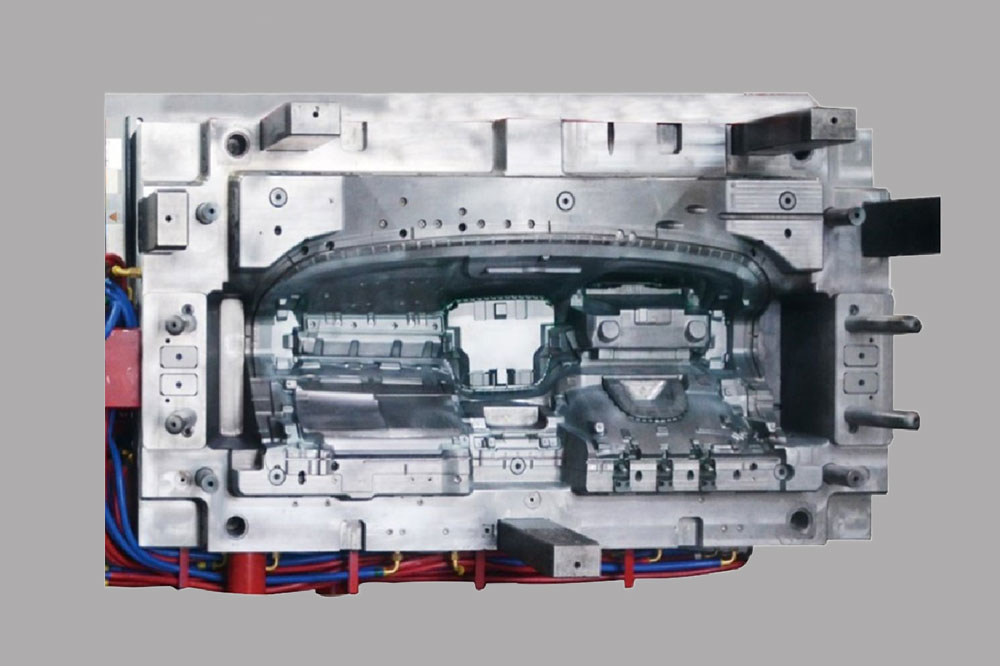How to Choose a Cost-Effective Bumper Molds Manufacturer?
Introduction to Bumper Molds in Automotive Manufacturing
Bumper molds are integral to producing automotive bumpers that meet safety, aesthetic, and performance standards. The design and quality of these molds directly influence the final product’s durability, fit, and finish. Therefore, selecting the right manufacturer is paramount for automotive companies.
Key Factors in Choosing a Cost-Effective Bumper Mold Manufacturer

1. Manufacturer’s Experience and Expertise
-
Industry Tenure: Evaluate how long the manufacturer has been producing bumper molds. A longer tenure often indicates a wealth of experience and a proven track record.
-
Technical Proficiency: Assess the technical skills of the manufacturer’s design and engineering teams. Proficiency in advanced design software and mold-making techniques is essential for producing high-quality molds.
-
Portfolio Review: Examine the manufacturer’s portfolio to understand their capabilities and the complexity of molds they have produced.
2. Quality Assurance Measures
-
Certifications: Look for certifications such as ISO 9001, which demonstrate adherence to international quality management standards.
-
Inspection Protocols: Inquire about the manufacturer’s inspection processes, including dimensional checks, material testing, and final product evaluations.
-
Material Traceability: Ensure the manufacturer maintains records of material sources and properties to guarantee consistency and compliance with specifications.
3. Technological Capabilities
-
Advanced Machinery: Manufacturers equipped with modern CNC machines, EDM (Electrical Discharge Machining), and high-precision milling equipment can produce molds with tighter tolerances and superior surface finishes.
-
Software Utilization: The use of CAD (Computer-Aided Design) and CAM (Computer-Aided Manufacturing) software facilitates accurate mold design and efficient production processes.
-
Innovation Adoption: Manufacturers that adopt innovative technologies, such as conformal cooling channels, can offer enhanced mold performance and reduced cycle times.
4. Material Selection and Expertise
-
Material Knowledge: A proficient manufacturer should have expertise in selecting appropriate materials for molds, such as P20 steel, H13 steel, or aluminum alloys, based on the production requirements and expected mold lifespan.
-
Material Sourcing: Ensure the manufacturer sources materials from reputable suppliers to maintain mold integrity and performance.
5. Cost Considerations
-
Transparent Pricing: Seek detailed quotations that break down costs, including design, materials, machining, and post-processing.
-
Value Analysis: Evaluate the cost relative to the quality and lifespan of the mold. A lower upfront cost may not always translate to long-term savings if the mold requires frequent maintenance or replacement.
-
Total Cost of Ownership: Consider factors such as energy efficiency, maintenance needs, and production downtime when assessing cost-effectiveness.
6. Lead Time and Production Capacity
-
Turnaround Time: Assess the manufacturer’s ability to meet project deadlines without compromising quality.
-
Scalability: Ensure the manufacturer can scale production up or down based on your company’s needs, accommodating future growth or changes in demand.
-
Project Management: Evaluate the manufacturer’s project management practices to ensure timely communication and progress tracking.
7. After-Sales Support and Maintenance
-
Warranty Terms: Understand the warranty coverage for the molds, including any conditions or limitations.
-
Maintenance Services: Inquire about available maintenance services, such as regular inspections, repairs, and refurbishment options.
-
Technical Support: Ensure the manufacturer provides prompt technical support to address any issues that may arise during production.
Technical Insights into Bumper Mold Manufacturing
1. Design Considerations for Bumper Molds
-
Parting Line Placement: Strategic placement of the parting line affects the aesthetic and structural integrity of the bumper.
-
Wall Thickness Uniformity: Maintaining uniform wall thickness prevents issues such as warping or sink marks.
-
Draft Angles: Incorporating appropriate draft angles facilitates easier ejection of the molded part.
2. Cooling System Design
-
Conformal Cooling Channels: Utilizing conformal cooling channels that follow the mold’s geometry can significantly reduce cooling time and improve part quality.
-
Thermal Analysis: Conducting thermal analysis during the design phase ensures efficient heat dissipation and minimizes cycle times.
3. Surface Finish and Texture
-
Polishing Techniques: Employing advanced polishing techniques achieves the desired surface finish, which is critical for aesthetic components.
-
Texture Application: Applying textures can enhance the visual appeal and provide functional benefits, such as improved paint adhesion.
Why Choose Huazhi Technology for Bumper Molds?
Huazhi Technology stands out as a leading manufacturer of high-quality bumper molds, offering:
-
Extensive Experience: Over 15 years in the industry, delivering molds that meet international standards.
-
Advanced Facilities: State-of-the-art machinery and technology to produce precise and durable molds.
-
Customization: Tailored solutions to meet unique client specifications, supported by expert design teams.
-
Cost-Effectiveness: Competitive pricing without compromising on quality, ensuring a high return on investment.
-
Timely Delivery: Efficient production processes and reliable logistics to meet tight deadlines.
-
Comprehensive Support: Dedicated after-sales service, including maintenance and technical assistance.
Conclusion
Choosing the right bumper molds manufacturer requires careful consideration of material expertise, manufacturing capabilities, customization options, cost efficiency, delivery reliability, and after-sales support. Huazhi Technology exemplifies these qualities, making it a trusted partner in the automotive molding industry.
Contact Huazhi Technology today to discuss your bumper mold requirements and discover how we can support your manufacturing needs with excellence.
FAQ: Selecting a Bumper Molds Manufacturer
1. What materials are commonly used in bumper molds?
Steel alloys, aluminum alloys, and composite materials are commonly used, each offering distinct advantages in terms of durability, cost, and production efficiency.
2. How does mold material affect production?
Mold material influences factors like cooling time, cycle duration, maintenance frequency, and overall mold lifespan, impacting production efficiency and cost.
3. Why is customization important in mold manufacturing?
Customization ensures that the mold meets specific design and functional requirements, leading to better product quality and manufacturing efficiency.
4. What should I consider regarding lead times?
Assess the manufacturer’s ability to deliver molds within your project timelines to avoid production delays and increased costs.
5. How important is after-sales support?
Comprehensive after-sales support is crucial for addressing maintenance needs, technical issues, and ensuring the longevity and performance of the mold.
6. Can Huazhi Technology handle large volume orders?
Yes, Huazhi Technology has the capacity and expertise to manage large-scale production while maintaining quality and timely delivery.

